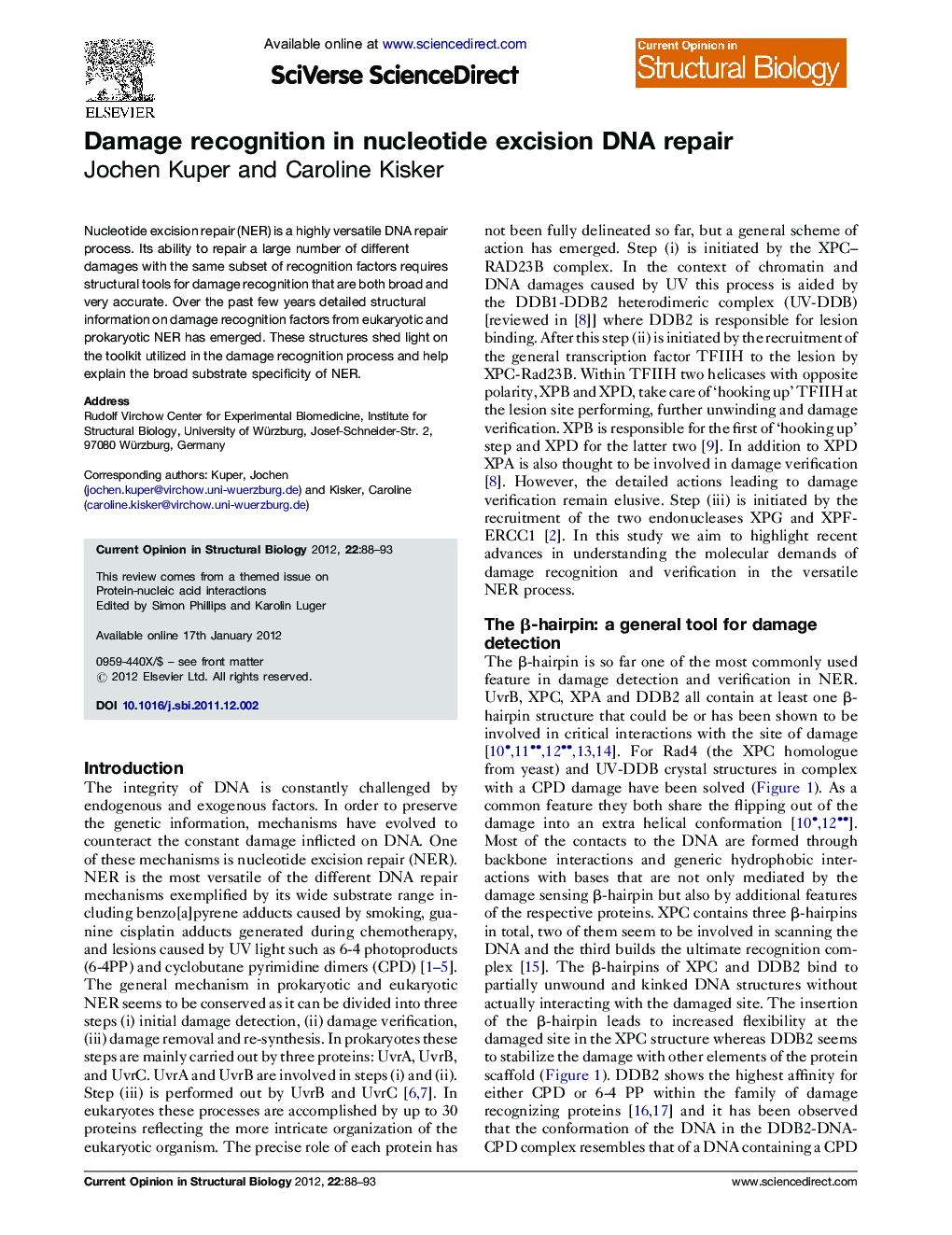| Article ID | Journal | Published Year | Pages | File Type |
|---|---|---|---|---|
| 1979221 | Current Opinion in Structural Biology | 2012 | 6 Pages |
Abstract
Nucleotide excision repair (NER) is a highly versatile DNA repair process. Its ability to repair a large number of different damages with the same subset of recognition factors requires structural tools for damage recognition that are both broad and very accurate. Over the past few years detailed structural information on damage recognition factors from eukaryotic and prokaryotic NER has emerged. These structures shed light on the toolkit utilized in the damage recognition process and help explain the broad substrate specificity of NER.
► The β-hairpin is introduced as a general tool for damage detection in NER. ► UvrA uses an active mechanism for damage scanning. ► The iron sulphur cluster of XPD is linked to damage detection.
Related Topics
Life Sciences
Biochemistry, Genetics and Molecular Biology
Biochemistry
Authors
Jochen Kuper, Caroline Kisker,
